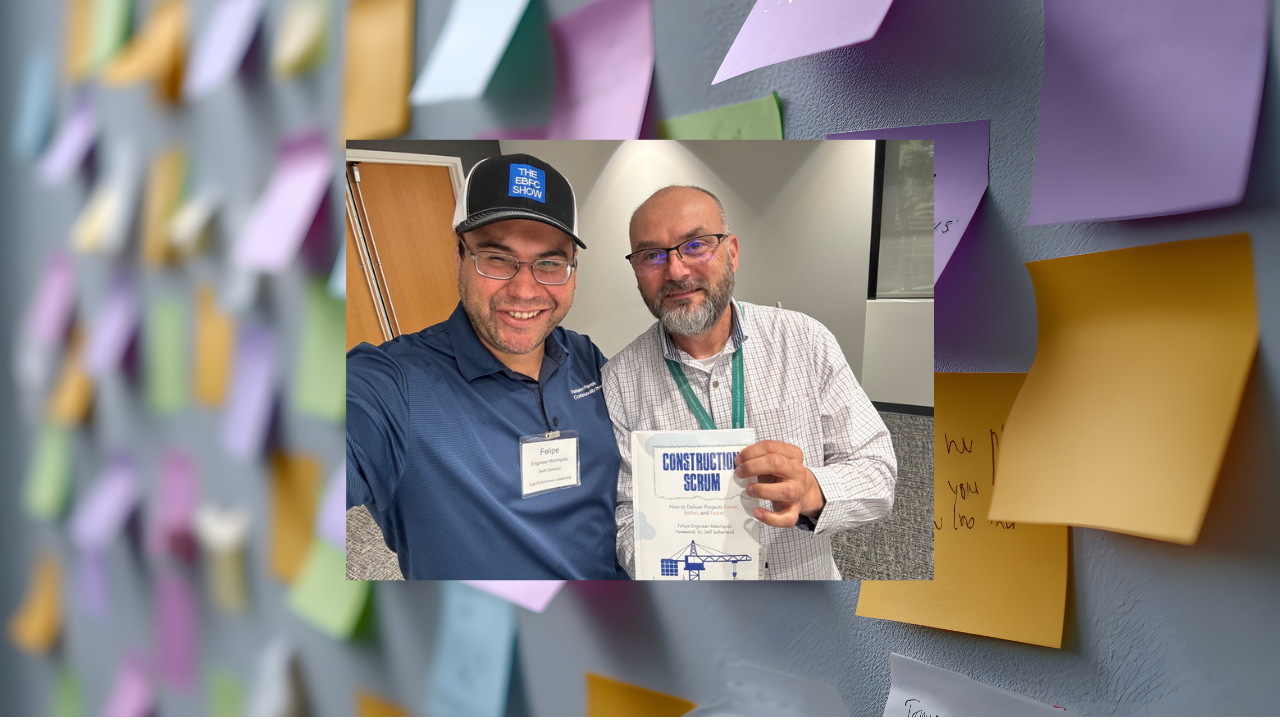How Sticky Notes Are Revolutionizing the $2+ Trillion Construction Industry

Inspired by real stories from Construction Scrum…and how you can too—starting today.
In my book Construction Scrum, I share the surprising truth that helped me—and thousands of others—get off the hamster wheel of 100-hour weeks and build a better way to work. Spoiler: it didn’t come from a fancy tool or a new piece of software.
It started with a whiteboard, a few sticky notes, and a decision to stop tolerating chaos.
This blog dives deeper into the big ideas behind Construction Scrum—real stories, real results, and the mindset shift that’s helping teams in our industry deliver twice the work in half the time. And at the end, I’ll share how you can join a growing community of changemakers doing this work together every week.
In construction, there’s a quiet rhythm of sayings that echo across jobsites, offices, and meetings:
“This is how we’ve always done it.”
“If it ain’t broke, don’t fix it.”
“We’re paid to do, not to think.”
I’ve heard them. I used to believe them. But here’s the truth: those sayings are costing us time, talent, and lives. They’re holding back some of the most capable, creative people I know from making work easier, better, faster, and cheaper.
When I started in the field, I worked too hard and too long, thinking that hustle alone would deliver results. And it did, but at the cost of my health, clarity, and relationships. What changed? A sticky note. Actually, a few of them.
🔍 Takeaway 1: Your Biggest Problem Isn’t the Schedule—It’s What You Can’t See
Construction is concrete, literal. So it’s wild to think that the biggest productivity killer isn’t the weather, late deliveries, or manpower shortages. It’s invisible waste — the stuff that hides in our workflows.
Scrum and Lean give us a powerful lens to spot this waste. I teach teams the acronym DOWNTIME, and just like that, the fog lifts:
-
Defects
-
Overproduction
-
Waiting
-
Non-utilized talent
-
Transportation
-
Inventory
-
Motion
-
Excess Processing
In Construction Scrum, when Hannah and Nathan in Phoenix felt underwater, they blamed headcount. But when they saw "Waiting" and "Non-utilized Talent" up on the whiteboard, their perspective shifted. They didn’t need more people—they needed better flow. That was the breakthrough.
🔑 Takeaway 2: You Don’t Need Permission to Start
This isn’t about convincing leadership or waiting for someone to bless your idea.
When I read Scrum: The Art of Doing Twice the Work in Half the Time, I didn’t wait. I made a board on Sunday, and by Monday, I was running sprints solo, acting as my own Product Owner, Scrum Master, and team. Two weeks later, I had doubled my output.
In Construction Scrum, Alicia, a sharp project engineer, did the same. Her manager shrugged it off. But a respected superintendent noticed her board, her clarity, her results—and backed her up. That board didn’t just organize her work. It amplified her impact.
📋 Takeaway 3: A Whiteboard Can Beat Software
We love our tech. But sometimes simple wins.
Just three columns—To Do, Doing, Done—and a few sticky notes. That’s it.
In Construction Scrum, when Jordan introduced this to his project team, the admin scoffed: “Scrum? Isn’t that a software thing?” But the energy shifted fast. Suddenly, the whole team could see the work. They owned the work. Conversations got sharper. Priorities clearer. Decisions faster.
That board didn’t just track tasks. It made the work visible—and solvable.
⏱️ Takeaway 4: “Twice the Work in Half the Time” Isn’t Hype
Real projects. Real teams. Real outcomes:
-
A team delivered nine projects with zero weekend work—when three used to crush them.
-
My own 100-hour weeks turned into 50-60 hour weeks—with better outcomes.
-
Teams I coach are cutting waste, boosting flow, and building real trust.
Scrum isn’t just a framework. It’s a mindset. It’s a commitment to see clearly, act quickly, and grow together.
🎯 So, What Game Are You Playing?
Here’s the kicker: Scrum isn’t about adding more to your plate. It’s about removing what doesn’t belong. It’s not just a better way to build—it’s a better way to live.
Every sticky note you move is a step toward reclaiming time, reducing chaos, and unlocking the full potential of your team.
If any part of this blog resonates with you—if you’re ready to test just one of those “unwritten rules” this week—I want to invite you to go deeper.
✅ Join the EBFC Scrum Community
A place where construction pros like you are doing real work, having real conversations, and transforming their projects with Scrum.
🔗 Free access through Jan 2026 with code STARTNOW
👉 Join now
Whether you're brand new to Scrum or leveling up your team’s system, there’s a place for you here. We’re not just building projects—we’re building people. Let’s do it together.
Let me know if you want this turned into a Podia-ready blog post or a downloadable PDF, or if you’d like a matching LinkedIn version to drive people to the community.










